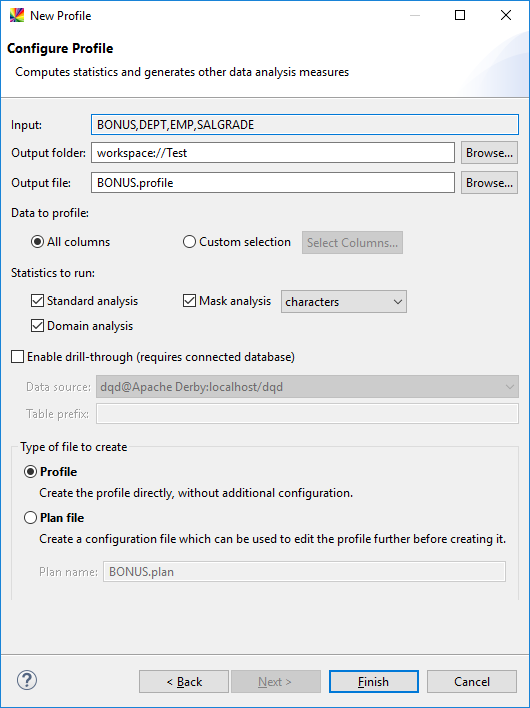Create a Data Quality Profile
When starting a project, analyzing the current state of data is an essential part of each solution as it helps you determine the future steps and cleansing rules. This analysis is also used for estimating the efficiency of applied rules when comparing with the final state of cleansed data.
A data quality profile is a summary of the state of data. It allows you to see duplicates and dependencies, evaluate business rules, observe patterns in data, and more.
After reading this chapter, you will be able to create a profile and configure it for additional analyses, such as masks, dependencies, and business rules.
Select data to profile
To profile a database table, you must have a database connection configured (see Databases).
In the case of text files, you might need to assign metadata to them to describe how the data is formatted. For more information, see Data Files, section Edit metadata.
-
Launch ONE Desktop.
-
In the File Explorer view, select one or several files (CSV, TXT, XLS, XLSX) or database tables, right-click the selection, and select Create Profile.
If you select several inputs, you obtain one profile file for all of them separated by input (one per table or file). To learn how to read a profile with multiple inputs, see Read a Data Quality Profile.

Configure the profile or create a profiling plan
In the profile configuration dialog that opens, specify where to create the profile as well as which columns to profile. The drill-through functionality allows you to see the individual records that comprise the statistics generated (database connection required). Finally, there is the option to create a profile or a plan file.
If you select the Profile option and select Finish, the profile is generated immediately using the specified settings and opened in the Profile Viewer. See Read a Data Quality Profile to learn how to read the data contained in the profile.
If you select the Plan file option, a plan for generating a profile is created. This option is useful if you wish to modify or filter the data before profiling it or if you want to configure more advanced settings of the profiling algorithm (such as adding business rules or performing primary key analysis). For more information, see Configure the Profiling Step.

Was this page useful?
